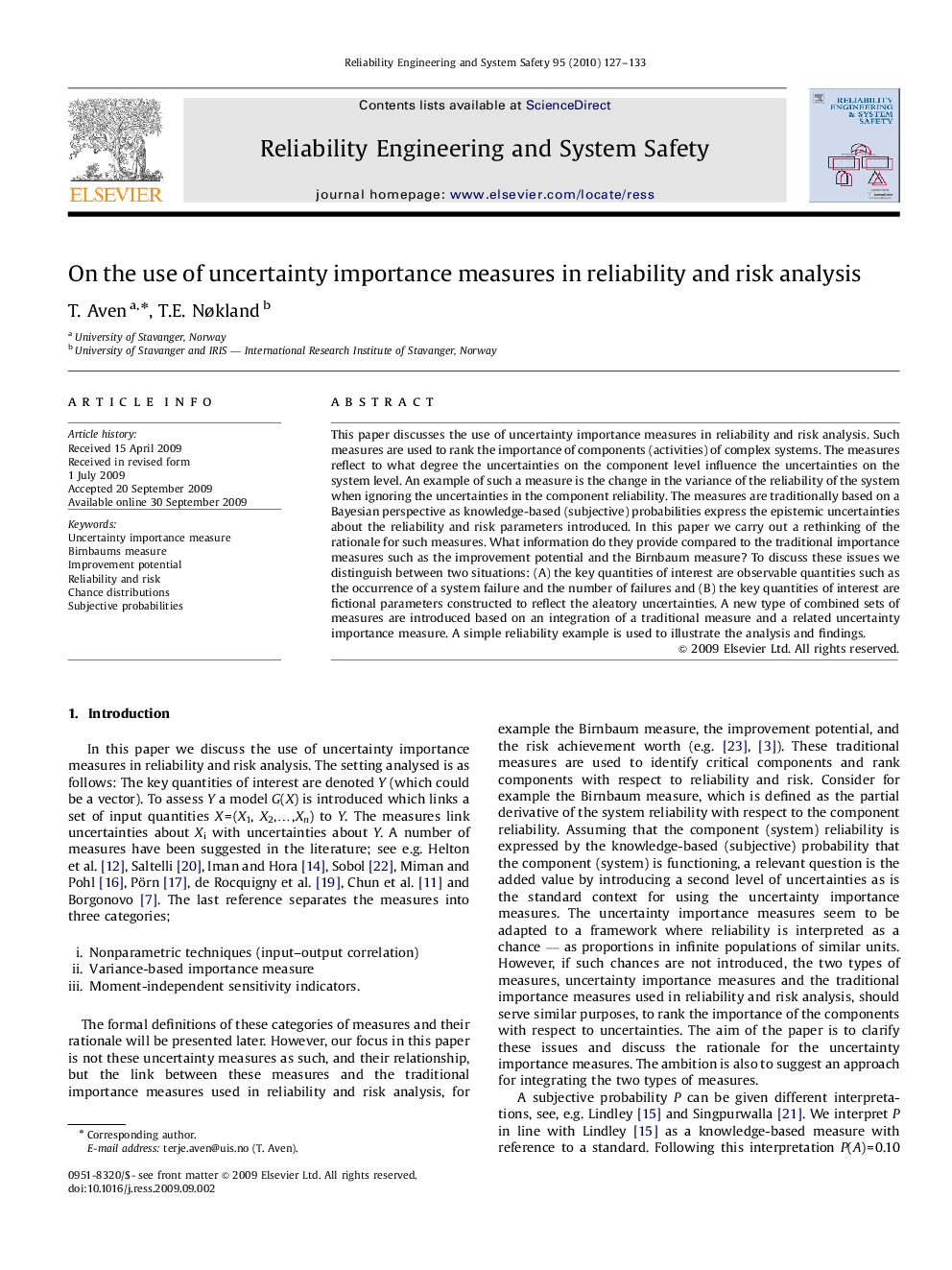| Article ID | Journal | Published Year | Pages | File Type |
|---|---|---|---|---|
| 806990 | Reliability Engineering & System Safety | 2010 | 7 Pages |
This paper discusses the use of uncertainty importance measures in reliability and risk analysis. Such measures are used to rank the importance of components (activities) of complex systems. The measures reflect to what degree the uncertainties on the component level influence the uncertainties on the system level. An example of such a measure is the change in the variance of the reliability of the system when ignoring the uncertainties in the component reliability. The measures are traditionally based on a Bayesian perspective as knowledge-based (subjective) probabilities express the epistemic uncertainties about the reliability and risk parameters introduced. In this paper we carry out a rethinking of the rationale for such measures. What information do they provide compared to the traditional importance measures such as the improvement potential and the Birnbaum measure? To discuss these issues we distinguish between two situations: (A) the key quantities of interest are observable quantities such as the occurrence of a system failure and the number of failures and (B) the key quantities of interest are fictional parameters constructed to reflect the aleatory uncertainties. A new type of combined sets of measures are introduced based on an integration of a traditional measure and a related uncertainty importance measure. A simple reliability example is used to illustrate the analysis and findings.
